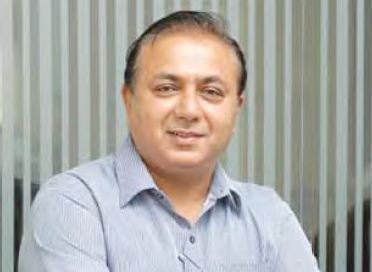
By Group Captain (Dr) Sanjeev Sood, Hospital and Health Systems Administrator, Air Force Hospital, Chandigarh

National Accreditation Board for Hospitals (NABH) defines small HCEs as a healthcare facility that provides allopathic services by doctors registered with MCI or SMC either as a standalone/solo or a small nursing home up to 50 beds. These are mostly run by private entrepreneurs who invest their own capital and operate in highly fragmented and unregulated environment. Being run on savings of couples or few colleagues, they dont have deep pockets to acquire sophisticated technologies, hire legal experts or undertake massive expansion plans like corporate giants. So what are the financing options before them to realise their expansion plans?
Debt funding
Debt funding is by far the commonest available option .Public sector banks as well as private banks provide succour when it comes to debt funding. The interest rate and terms of payment are the most important factors governing the feasibility of the loan. Financial institutions are aggressive and willing to disburse higher bank credit in days of recession to rapidly push growth in recession proof healthcare sector. These institutions are willing to offer range of loans for raising working capital, term loans for capex, equipment funding, securitisation of receivables, services for private banking, trade finance for medical equipment vendors / hospitals as well as merchant banking services.

Leveraging PPP model
Land and building cost are up to 45 percent to 65 percent of capex cost of hospitals. Medical entrepreneurs can look at investors to fund the same so as to reduce capital cost per bed and reduce break even period to less than 18 months. They can obtain land at concessional rates from government in the outskirts or forge a public private partnership with land owners so as to mitigate the cost of these assets. Going for green and efficient building design for optimal land use and energy conservation in the long run is an imperative these days. Alternatively, small HCEs can consider setting up hospitals (with 100 beds or more) in rural areas to avail tax exemption under sec 80 1 B for the first 5 years. Entrepreneurs can also build public private partnership with state governments for management of primary and secondary health care units by is another great option. Diagnostic Imaging Centers can provide their services in teaching hospitals by forging PPP- as a win- win situation for all the stakeholders.
Funding the expensive equipment
Expensive medical equipment like MRI, cyber knife can also be funded by specialised companies/investors on a referral/commission basis in the hospital premises there by reducing capex cost. Cost of expensive equipment such as blood gas analyser and vacuum assisted closure can be further saved by convincing the vendors to simply park their machines in the hospital instead of outright purchase and buy consumables from them, thus benefitting both. Asset utilisation can be further enhanced by sharing expensive imaging equipment and other facilities such as laser equipment, cyber knife and blood bank with other hospitals and using them round the clock instead of 7-8 hours daily.
Be a part of Elets Collaborative Initiatives. Join Us for Upcoming Events and explore business opportunities. Like us on Facebook , connect with us on LinkedIn and follow us on Twitter , Instagram.












